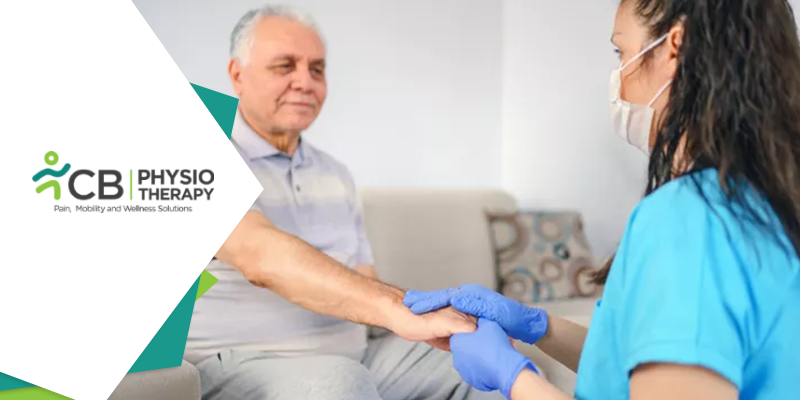Parkinson's disease is a complex neurodegenerative disorder that causes motor and non-motor symptoms, including cognitive impairments. Though there is no permanent cure for Parkinson's disease, but drug treatments, surgery, and other therapies are employed to relieve these symptoms. However, for most Parkinson's patients, an additional treatment method like physiotherapy is required to aid mobility and boost independence. Exercise of all types is beneficial for patients with Parkinson's disease. The physiotherapist can guide the patient through the right moves to increase mobility, strength, and balance, and help him/her remain independent. In this blog, we have discussed the physiotherapy management of patients suffering from Parkinson's disease. Given below are the benefits and exercise techniques used by a well-trained physiotherapist to manage the symptoms of Parkinson’s disease.
What is Parkinson's disease?
Parkinson's disease is linked to disorders of the basal ganglia, basal ganglia are a group of neurons located deep within cerebral hemispheres. The disorders include rigidity, characterized by an increase in resistance and tremors at rest. Parkinson's disease occurs due to dopaminergic cell loss within the substantia nigra, it occurs due to genetic and environmental factors.
Benefits of physiotherapy
The main role of the physiotherapist is to maximize the functional ability strength, endurance, flexibility, functional practice, and balance through movement rehabilitation using support and education. Physiotherapy interventions include exercises and movement strategy training.
- Maintains a good breathing pattern,
- Increases muscle strength and joint flexibility,
- Corrects and improves abnormal movement patterns and posture,
- Maintains and improves function and independence, which helps to improve a person's quality of life.
Physiotherapy management
The physiotherapist conducts a comprehensive evaluation of the posture, strength, flexibility, walking, endurance, balance, coordination, and attention with movement. Based on these test results physiotherapist develops an exercise program to help stay as active and as independent as possible.
Depending on the nature and severity of the condition, the treatment program is designed that focuses on activities and patient education. It consists of exercises that help to:
- Improve fitness level, strength, and flexibility,
- Turnover in bed more easily,
- To get in and out of bed, chairs, and cars,
- Turnover in bed more easily,
- Stand, turn, and change directions more efficiently,
- Improve the smoothness and coordination while walking.
- Improve ability to perform hand movements,
- Improve ability to climb and descend stairs and curbs,
- Perform dual tasks at a time more efficiently,
- Participate in important activities.
Exercise has been proven to maintain health and well-being in Parkinson's patients. Neuroprotection exercises focus on endurance and use of motor learning principles approaches, such as mental imagery and dual-task training. It involves complex, powerful and intensive exercises. Neuroprotection training is effective and should be introduced in the early stages, though it helps at all stages.
Physical activity like aerobic exercise helps slow down motor skill degeneration and depression. And also increases the quality of life of patients with Parkinson's. Exercises aimed to improve cardio-pulmonary functioning and improvement in biomechanics, posture, trunk and overall symmetric movement have been found of great advantage in neurodegenerative disorders.
Breathing exercises
Breathing exercises like inspiratory muscle training on lung functions in patients with mild-to-moderate Parkinson's are found to be effective. Respiratory complications are found to develop in many patients as their Parkinson's progresses, so attention should be given to manage the progressive weakness of respiratory muscles and rigidity of the thoracic cage. The individual is encouraged to continue being active and participate in physical exercise for as long as possible.
To target both motor and non-motor symptoms, correct and proper movement is achieved by improving range of movement and physical capacity in daily activities by walking, incorporating manual activities like holding, grasping, etc.
Strengthening exercises
Strengthening exercises are given against an external resistance like weight machines, weight cuffs, therapeutic putty, cycle ergometer, elastic, etc. This also improves balance, overall physical performance. As muscle weakness is a major problem for patients with Parkinson's disease, depending on the stage of the disease, the physiotherapist recommends resistance exercises with light dumbbells or resistance bands. Hydrotherapy, water resistance can also be used to strengthen muscles.
Stretching and Flexibility
Parkinson's disease patients tend to develop tightness in the hip flexor, hamstring, calf muscles, etc. To decrease this stiffness, stretching exercises are given at frequent intervals throughout the day.
Executing a dual-task
Motor-Cognitive dual-Task training improves dual-task ability and can also improve gait, balance, and cognition. Dual-task likes talking while walking is difficult in patients with Parkinson's.
Progressive resistance training (PRT)
Progressive resistance training (PRT) is used to be effective in decreasing bradykinesia and improving functional performance in patients with mild-to-moderate Parkinson's disease.
Reciprocal Patterns
Reciprocal movements include left-to-right or side-to-side patterns, such as swinging the arms while taking steps while walking. Parkinson's disease may affect these patterns. The physiotherapist may help reinforce reciprocal patterns by the use of a stationary bike or an elliptical machine, also incorporate walking by keeping in mind the swinging of the arms.
Balance Work
Normal balance is an interplay among the visual feedback, the inner ear which helps orient, and how the feet sense the ground beneath them. Parkinson's disease can affect this balance system, making the gait unstable. Gait training can help to improve balance. Physiotherapy combines cognitive movement strategies, cueing techniques, balance exercises, and physical activities. Immediate effects of external cueing and attention can be seen on improving step length, freezing, and turning during walking tasks, and in activities of daily living.
To deliver a patient-centered treatment, it's important to provide patient education, discuss the options, and have an interactive session. Good communication and educating the patient are important as delivering an intervention.

